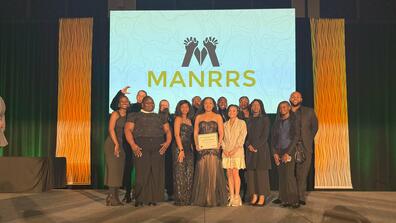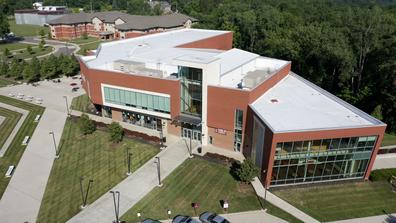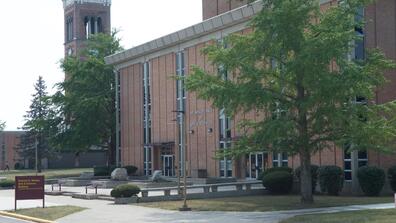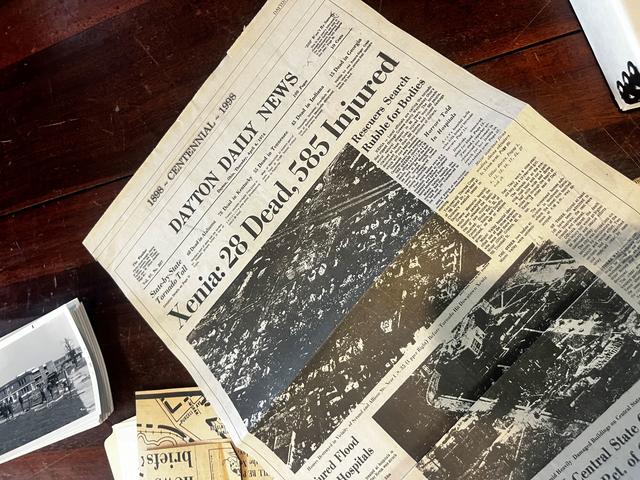
Central State University leaders recall witnessing terrifying 1974 tornado
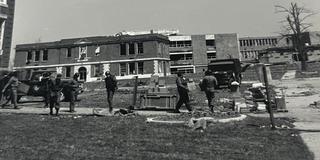
Above: Members of the National Guard and survivors clean up the campus of Central State University after the 1974 tornado. Photo courtesy of the Greene County Historical Society.
CSU Dayton location Director Dr. Lesa Taylor DeVond has deep ties to Central State, including a father who worked as chief engineer at the power plant. DeVond later attended CSU herself, graduating with a bachelor’s degree in 1980 and a Master of Business Administration in 2017. She and Alma Brown of Central State University recently shared their memories of the tornado.
Stories of the 1974 tornado that destroyed much of Xenia, Ohio, and Central State University are pouring in during this 50th anniversary of the storm.
Survivors of all ages recall exactly where they were when the tornado struck. Many also remember the ways in which the communities of Xenia and neighboring Wilberforce, home of Central State University, united to rebuild in the months and years after the storm.

The tornado that occurred during the Super Outbreak of 1974 was a catastrophic weather event that affected 13 states in the eastern United States.
Ohio was one of the areas that was hit the hardest, with the Ohio Valley region alone reporting 159 deaths and over 4,000 injuries. Two violent F5 tornadoes devastated Xenia and Sayler Park, a western suburb of Cincinnati, with the former being one of the deadliest with 34 fatalities. The Xenia tornado also caused massive damage, amounting to approximately $250 million in 1974, making it one of the costliest U.S. tornadoes.
It is heartbreaking to recall the loss of four cherished members of the Central State University family on that historic date. They included a student, Laura Lee (Baber) Hull, groundskeeper Ralph E. Smith, credit union director Evelyn V. (Howard) Rockhold, and postmaster Oscar T. Robinson.
Those who were living here at the time vividly remember April 3, 1974.
One of those people was Lesa Taylor DeVond, whose father worked as chief engineer at the CSU power plant. At the time, DeVond was a 15-year-old sophomore at Xenia High School and witnessed one of the most devastating tornado events in Ohio history.
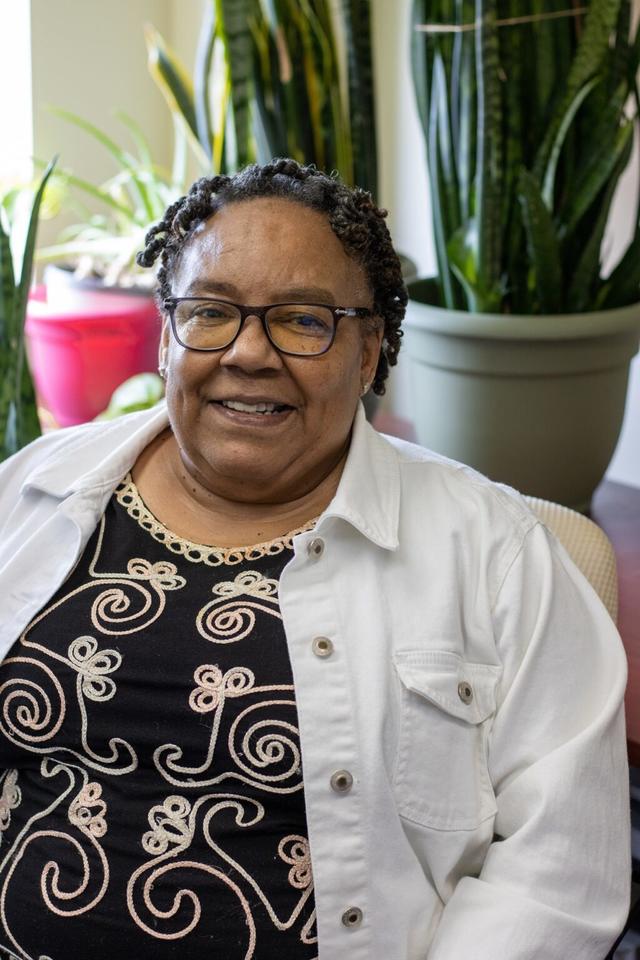
Alma Brown, ’81, the current administrative coordinator at the College of Education who was 16 years old at the time, was at her home in Xenia when the tornado hit. Brown’s family also has strong ties to Central State, with her children, cousins, nieces, and nephews all attending.
After the tornado struck, Brown got a job at CSU to microfilm records, preserving the University’s history. Her parents, Charles E. and Cora L. Stevens, worked at CSU at the time in the campus police department and the Office of the President, respectively.
“On April 3, my dad came running in around 4 p.m., saying, ‘Do you have a TV on?’ He informed them of the tornado watch,” Brown said. “Nobody was really in a big hurry until then. Dad pushed us into the bathroom and told us to stay until he came back to get us."
“There was a loud roar, a sound that I’ve never heard since. It was very difficult to be in the bathroom and told you can’t come out.”
Brown’s home lost power and water during the tornado, much like the rest of the area. “It was an eery feeling. My mother was out here on campus, and my father told us to stay put because he was going to get our mother. But there was no way to get through the debris.”
Brown’s father rode his bicycle as far as he could, then walked the rest of the way to campus. His wife’s vehicle had not been damaged, so they drove back to Xenia with two coworkers.
Journey during a tornado
DeVond had a more harrowing experience in the tornado.
“One of the most pivotal realizations I gained from the 1974 tornado experience was the innate ability for survival that can awaken even in teens when faced with calamity,” DeVond reflected. “At the age of 15, amidst the chaos, we discovered within ourselves a resilience and forward-thinking mindset that rivaled, if not surpassed, that of many adults at that time. I have come to understand it as a test that made me into a stronger individual. Overcoming what is now recognized as PTSD (post-traumatic stress disorder), expressed through recurring tornado nightmares ... was a testament to my inner strength."
“With the passage of time, those thoughts and nightmares have diminished. I find comfort and healing in sharing my story, hoping to impart even a small nugget of wisdom that might help others in navigating the aftermath of a catastrophic weather event.”
DeVond recalls the day in vivid detail, from the sights and sounds to the smell and feelings of excitement and fear. She remembers seeing the tornado jump over her head as she was walking home from after-school sports.
It was just like any other school day. It had been raining since noon, and everyone thought that track practice may be canceled. Local television had been broadcasting severe weather forecasts all day.
When school ended, the sun was shining high and bright.
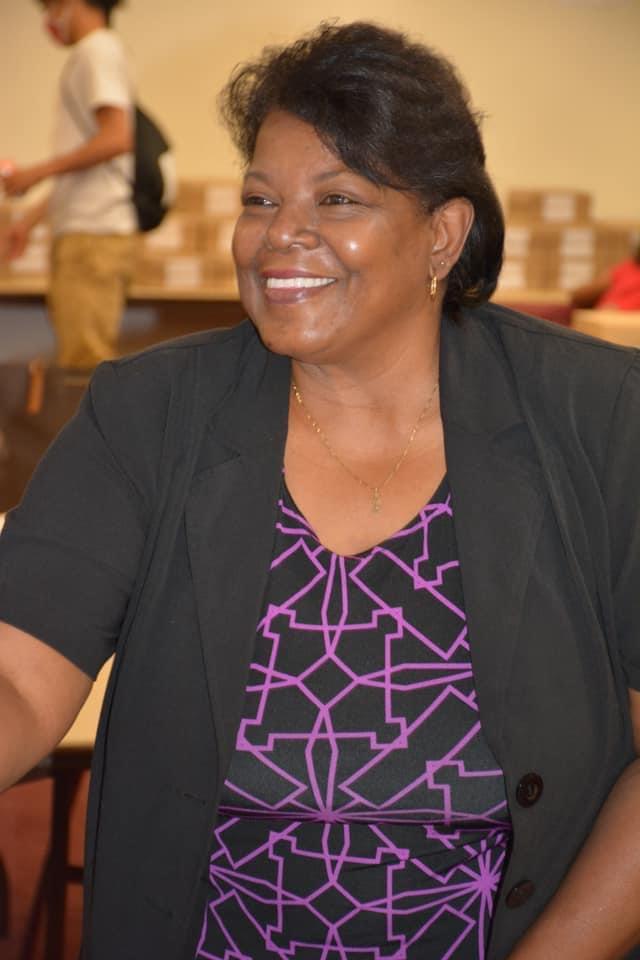
DeVond and her brother, Kenny, walked to Cox Field for track practice. However, upon arriving, Coach Norma Pavlovic told them to go home — a storm was coming. To DeVond and her brother, the term "storm" meant thunder, lightning, and rain — nothing too serious. As they crossed the field to go to a nearby store and call their mom for a ride, DeVond had an eerie feeling that something was behind her. As she turned, she saw the tornado.
DeVond and her brother dashed into the nearby Sears Appliance store to warn their mother by calling her. DeVond was mesmerized as she watched the tornado. She described it as a brilliant deep sky blue with a perfect funnel shape.
“It was making an eerie but sweet screeching sound as it whipped around in the middle of U.S. 35 coming toward Xenia. Then, it split into two funnel-shaped tornadoes,” DeVond recalled.
DeVond said lightning bolts appeared to be coming from the ground up. She watched the tornado destroy a newly built Long John Silver’s. Suddenly, there was a black mass right across from her with all kinds of debris swirling around in it. She could not move. Her brother and friend were inside Sears, and she was watching in amazement.
A man grabbed her by the arm, saying, "We need to take cover." He pulled her into the store, and they all went to the back room. DeVond, her brother, and her friend joined employees and customers in ducking under counters and holding onto each other. Just as they grabbed ahold, the tornado was over the building. They could not breathe, DeVond said, and the force of the wind was tilting them to the side.
“I looked out and saw all kinds of things floating through the air — adding machines, purses, typewriters, paper. It seemed like forever, but it was only seconds,” DeVond said.
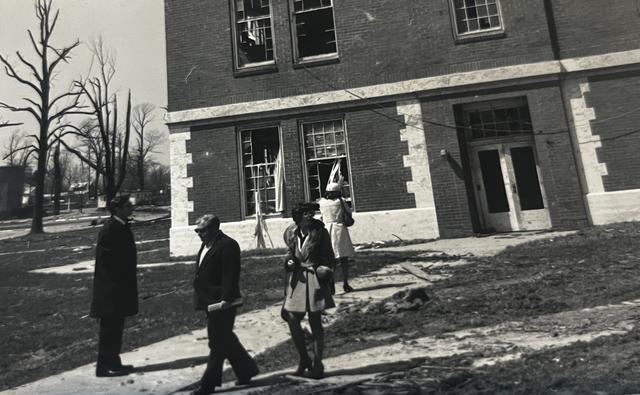
The aftermath
After the tornado passed, everyone climbed out from under the counters to find there was no roof on the building. It was incredibly quiet and still, DeVond said. The sky was no longer dark and grey, but a deep blue. Then, the rain began. As suddenly as it started, it stopped.
“After the rain, the sky was lined with clouds that resembled a scalloped edge on a linen dress,” DeVond said. “All of a sudden, the sounds started. Sirens, people moaning and screaming, just chaos.”
Only about 10 blocks from home, DeVond and her brother decided to journey up Main Street. A neighbor and his wife driving by saw the young people and picked them up. But when they arrived at the Kroger — now a McDonald’s — they saw a train had fallen on the store, preventing them from continuing by car.
“Walking along the track, we found a place ... where half of the train fell one way and the other half on the other side,” she said. “We climbed through the debris and continued our journey.”
But the danger had not passed. They came across many downed powerlines and dangerous debris. As they passed the McDonald’s — where the Ramanda hotel sits today — they saw only front counters remained, exposing cash registers and money. They continued.
A police cruiser passed with a megaphone, urging everyone to take cover as more tornadoes were on the way. DeVond and her fellow survivors nestled in the basement of the courthouse with a radio.
“I remember there being about 20 people or so huddled together on the floor,” she said. “We were there for hours — at least until 9 or 10 p.m. Each time we tried to venture out, we were told to take cover again. Soon, some Red Cross volunteers came in and suggested we go to the YMCA on Church Street, where they had food.”
While trekking to the YMCA, a classmate said he saw DeVond’s mother’s vehicle with all the windows shattered, sitting on flat tires — demolished.
“Fear finally entered,” she said. “As we rushed to the YMCA, all we could think of was where Mom was. Is she OK?”
As they entered the YMCA, another tornado warning was issued. Everyone heeded the warnings without delay. At the YMCA, survivors were given food, drinks, and small hygiene kits with wipes, lotion, and toothbrushes. Some like DeVond and her peers were cold, having worn shorts and T-shirts for track practice, and received blankets before snow fell that evening.
“We were thankful to be surrounded by so many helpful and caring people,” DeVond said.
All locations and shelters required people to sign in, so those who were looking for loved ones could find them. Around 1 a.m., DeVond looked up and saw her father, grabbing ahold of him with a big hug.
“Dad was a no-nonsense person,” she said. “As we were walking home, there were no words spoken other than him telling us to be careful not to step on the downed powerlines and debris in the way. When we arrived home, our close neighbors were in our basement because seemingly, it was one of the only basements around.”
As the family reunited, they began sharing their stories from the hectic day. DeVond learned her mother had jumped in her vehicle when she heard the tornado was in Xenia on Channel 7, and she saw it coming while sitting at the traffic light in front of the YMCA. She attempted to enter Central Jr. High School, but it was locked. Finally, the assistant principal came out to assist her.
“She said a little boy was riding his bike and she led him along with Mr. Golden (the assistant principal) with a window well at the school,” LeVond recalled. “She said Mr. Golden grabbed a piece of tin sheeting that fell into the well and covered them with it just as a pile of bricks and debris came crashing in on them.”
Afterward, DeVond’s mother realized she could not drive her vehicle home as it was too heavily damaged. So, she started walking.
“She said she wondered why people were staring at her as she walked up the street. She looked in the mirror and saw that her finely coiffed hairstyle was sticking straight up in little twists all over her head (much like the styles worn today),” DeVond said. “Dad was driving home in a University truck after picking up supplies. He said he saw (the tornado), put the pedal to the metal but the truck would not move due to the force of the wind. He said that he parked down in a ditch until it passed over and then drove to campus to retrieve his car.”
When he arrived back at Central State, DeVond’s father found a light pole had fallen on the roof of his vehicle.
“Our family was so blessed that we did not experience any loss of life or loved ones,” DeVond said. “Now, you don’t have to tell me twice — I pay attention to weather alerts. I do not ever want to go through that again.”
